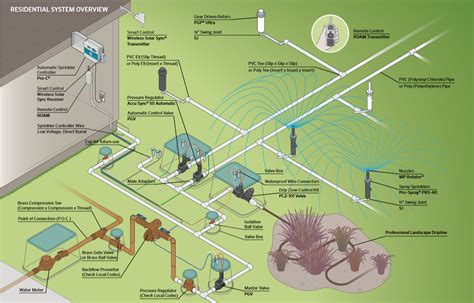Choosing the Right Depth for Your Irrigation System
Proper irrigation is crucial for a healthy and thriving landscape. But choosing the right depth for your irrigation system isn't simply about digging a hole and hoping for the best. The depth at which you install your irrigation system significantly impacts its efficiency, effectiveness, and longevity. Getting it wrong can lead to wasted water, poor plant growth, and costly repairs. This comprehensive guide will help you determine the optimal depth for your specific needs.
What Factors Influence Irrigation Depth?
Several factors influence the ideal depth for your irrigation system. Ignoring these can lead to significant problems down the line.
1. Soil Type:
Different soil types have varying water retention capacities. Sandy soils drain quickly, requiring shallower irrigation systems to prevent water loss. Clay soils, on the other hand, retain water longer, potentially necessitating deeper installation to avoid waterlogging. Loamy soils offer a good balance and generally allow for more flexibility in depth selection.
2. Climate:
Your local climate plays a vital role. Arid or semi-arid regions with high evaporation rates often benefit from deeper irrigation to minimize water loss. Areas with consistently high rainfall might require shallower systems to prevent overwatering.
3. Plant Type:
Different plants have different root systems. Shallow-rooted plants need shallower irrigation, while deep-rooted plants require deeper systems to reach their extensive root zones. Consider the specific water requirements of your plants when deciding on the depth.
4. Irrigation System Type:
Drip irrigation systems, for example, can be installed at shallower depths than sprinkler systems. Drip irrigation delivers water directly to the plant roots, minimizing water loss through evaporation and runoff. Sprinkler systems, conversely, often need deeper installation to prevent damage from freezing and to improve water distribution.
5. Frost Line:
In colder climates, consider your local frost line depth. Irrigation lines should be installed below the frost line to prevent damage from freezing and thawing. This is crucial for ensuring the longevity of your system.
Common Irrigation Depths and Their Applications
While there's no one-size-fits-all answer, here are some general guidelines:
- Shallow (6-12 inches): Suitable for sandy soils, areas with high rainfall, shallow-rooted plants, and drip irrigation systems.
- Medium (12-18 inches): A good compromise for many situations, especially loamy soils with moderate water retention and a mix of plant types.
- Deep (18-24 inches or more): Ideal for clay soils, arid climates, deep-rooted plants, and areas with a deep frost line. Often necessary for sprinkler systems to protect them from freezing.
How Deep Should My Irrigation System Be? (Addressing a Common Question)
This question doesn't have a simple answer. The ideal depth depends on the factors outlined above. Consulting with a landscape professional or irrigation specialist is highly recommended to determine the best depth for your specific site conditions and plant needs. They can assess your soil type, climate, and plant selection to provide a tailored solution.
What are the Risks of Incorrect Irrigation Depth? (Another frequently asked question)
Installing your irrigation system at the wrong depth carries several risks:
- Wasted water: Shallower systems in clay soils can lead to runoff and wasted water. Deep systems in sandy soils can result in water draining too quickly before reaching the roots.
- Poor plant growth: Insufficient water at the root zone can hinder plant growth, leading to wilting and reduced yield. Overwatering can cause root rot and other plant diseases.
- System damage: Freezing and thawing cycles can damage lines installed above the frost line. Physical damage from digging or other landscaping activities is also a risk at shallower depths.
- Increased maintenance costs: Addressing problems caused by incorrect depth can be expensive and time-consuming.
By carefully considering the factors outlined above, and potentially seeking expert advice, you can ensure your irrigation system is installed at the optimal depth for efficiency, effectiveness, and longevity. A well-designed irrigation system will not only save you water and money but also contribute to a beautiful and healthy landscape.

